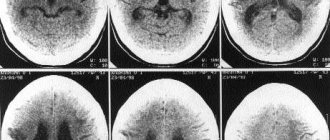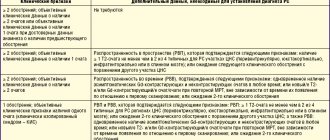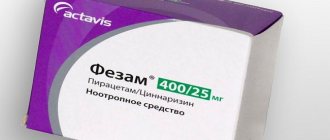Lemtrada is an anti-multiple sclerosis drug also known as alemtuzumab. It is a monoclonal antibody that binds to certain receptors on the surface of immune cells and changes the way the immune system works so that it stops attacking nerve fibers. The US Food and Drug Administration (FDA) currently recommends the use of Lemtrada for relapsing forms of multiple sclerosis after two or more courses of classical treatment have failed.
How does Lemtrada work?
Multiple sclerosis is an autoimmune disease in which the immune system attacks the sheaths of nerve fibers necessary for the normal conduction of impulses. The disease is chronic and is currently considered incurable; doctors can only slow down its progression.
The immune system is complex. It consists of different types of cells, they “communicate” with each other and with other tissues of the body using molecular signals. There are special receptor proteins on the surface of immune cells. When they receive a signal and are activated, it leads to certain effects.
One of these receptors is called CD52 (another name is CAMPATH-1 antigen). Leukocytes that carry it on their surface are prone to aggression against the nervous system. They are credited with a leading role in the occurrence of relapsing multiple sclerosis.
Lemtrada attaches to white blood cells that carry the CD52 receptor and causes “genocide” of them. The body is cleansed of “pest leukocytes”, and gradually their place is taken by “useful” immune cells.
This mechanism of action has been studied in transgenic mice. The subtleties of how the drug works in the human body are still not fully known.
A drug that not only treats multiple sclerosis, but is also able to restore immunity
For many years until now, the prognosis for patients suffering from multiple sclerosis was predetermined - they lost the ability to move, became disabled and eventually died.
However, thanks to innovative drugs, the situation has completely changed. A new drug has appeared, therapy with which can stop the development of MS symptoms, and in some cases improves the well-being of patients.
This was reported during the European MS Conference, which takes place every year. Treatment consists of two courses of injection of the drug, carried out at annual intervals. Their effectiveness lasts up to eight years, and sometimes longer.
Multiple sclerosis is an autoimmune disease of the central nervous system that affects the brain and spinal cord. The myelin sheath insulates the body's intact nerves and facilitates the free transmission of electrical impulses.
In patients with multiple sclerosis, the myelin sheath is destroyed, as a result of which the process of transmission of neural impulses is disrupted, and the patient finds it difficult to control his body.
He is worried about convulsions, dizziness, gastrointestinal disorders and sexual dysfunction. It becomes difficult for him to walk and perform various movements. The most common type of pathology is relapsing-remitting multiple sclerosis (RRMS).
Most often, following an attack, the patient recovers and returns to normal. However, during the course of the disease, when the patient experiences several periods of exacerbation, he is no longer able to fully recover, and his health becomes worse.
During this period, he should register a disability, which becomes more and more severe over time. Multiple sclerosis changes from relapsing-remitting to progressive, however, the condition continues to constantly worsen. Only a small proportion, about 15%, initially suffer from a progressive form of multiple sclerosis.
According to statistics, almost three million people worldwide suffer from this disease. The percentage of sick women is higher compared to men. At a distance from the equatorial zone, pathology is much more common. Unfortunately, the causes of the disease have not yet been clarified.
It is assumed that predisposing factors may be heredity and environmental conditions (immune system, the presence of infectious diseases, lack of vitamins, especially D, tobacco addiction, etc.).
To date, multiple sclerosis is incurable. However, most patients who suffer from it can now live a fairly long life. Innovative means that can stop the process of destruction of the myelin sheath prolong the duration of remissions, delay disability and improve the quality of life of patients.
Modern therapy for patients with multiple sclerosis includes sixteen drugs, the mechanism of action of which varies. To determine the level of effectiveness of a drug, an analysis of three main parameters is carried out - the number of exacerbations throughout the year, the level of disability of a person, which is indicated by the EDSS index on a scale of 0 - 10, in which 0 means absolute health, and 10 means death.
If the EDSS-7 index is assigned, the patient already requires a wheelchair. The third factor in the drug's action is an MRI scan to find out how damage is prevented and whether the volume of the brain is reduced.
Almost four years ago, the US Food and Drug Administration (FDA) approved Lemtrada, a drug used to treat multiple sclerosis. Most medications used to treat multiple sclerosis must be taken every day as tablets or injections.
Lemtrada is used in two courses with a one-year break - first, injections are given in a course of five days, after a year - another three days. For many patients, treatment stops at this point and they do not need to take medications regularly or repeat the course of therapy.
Treatment in two courses
The mechanism of action of the drug “Lemtrada” is a “reboot” of the immune system, during which aggressive damaged cells are removed while simultaneously creating new, healthy ones.
So far, researchers have conducted two Lemtrada studies involving 1,400 volunteers. The first examined the effect on patients who had not previously received any treatment for multiple sclerosis.
The second involved patients who had previously taken one or more drugs. The level of effectiveness was compared not with placebo drugs, but with another active substance, which at that time had the most significant effect in the treatment of multiple sclerosis.
According to the results of both studies, Lemtrada showed itself to be the best, its effectiveness was higher than that of the drug with which the comparison was made.
After two years from the completion of the studies, most of the people who took this drug (90% of volunteers) remained for further observation with doctors for another eight years, another 73% took part in subsequent studies, making it possible to obtain reliable information about its effectiveness over the long term.
The results of these trials were presented during the European Conference on the Treatment of Multiple Sclerosis, which took place in Berlin, Germany, in late autumn 2021.
Based on the results of these studies, Lemtrada was able to prove the proper level of its effectiveness according to all three parameters. Thanks to it, there was a dramatic decrease in the average annual number of exacerbations - after eight years, in those suffering from multiple sclerosis who had not been treated with anything before, it decreased from 1.8 to 0.16 times per year, and in those who had previously taken other drugs - from 1.7 to 0.18. Thus, they suffered 1 attack every 7 and 5 years, respectively.
The change in EDSS indices is also impressive - after eight years of testing Lemtrada, for the majority of patients, the degree of disability not only did not increase, but almost half of them showed improvements in their condition - 40% of those who had not previously taken medications and 47% of those who had been treated before . It was thanks to Lemtrada that it became possible to reduce the current degree of disability in people suffering from multiple sclerosis.
According to MRI data, patients who took part in the experiment also showed improvements. Over the course of eight years, almost 70% of patients did not find a single new radiological marker or an increase in an existing lesion, and almost 90% did not develop new pathological lesions that would indicate the presence of an inflammatory process.
However, the greatest impression was made by the result of the study on reducing brain volume loss until complete stabilization so that it was equal to the data of a healthy elderly person.
For half of the participants, two courses of therapy were enough, which lasted only eight days, but remained effective for eight years.
Over the course of eight years of observation of MS sufferers after treatment, information of exceptional value was collected. We now know the level of effectiveness of this remedy over a fairly long period of time. We are now seeing an incredible reduction in the number of exacerbations.
Patients with MS cannot completely get rid of it until they die. Existing drugs can delay the rapid development of the disease, however, we previously did not know the duration of the delay. Modern trials have shown continued effectiveness for eight years or more - this data is invaluable to the medical community.”
Efficiency for everyone?
Unfortunately, no drug can be equally effective in all patients. Lemtrada is mainly intended for those who have an active inflammatory process, that is, for almost 70% of people with multiple sclerosis.
Given the young age of the patient, who was diagnosed fairly recently, it is likely that this drug will be most effective for him. However, if the patient does not fall into this category, we can choose another therapy for him.
Is it enough to take only two courses of therapy?
There were some subjects who needed another dose of Lemtrada after 5-7 years, but there weren’t that many of them. We were also able to find out the dose of the drug that should be given. However, for these patients, a couple of quiet years without attacks became possible.
Once over a period of several years, they need to undergo repeated courses of therapy in order to continue living without taking medications every day. We reassure patients by saying that from now on they don’t have to remember about their problem. They can, in fact, forget about it to the point that we have to call them in monthly for blood tests to monitor their condition.
DO YOU HAVE ANY QUESTIONS? All readers of our newsletter have the right to receive advice from an Israeli oncologist. By clicking the button below, you will be taken to the application page. In the “Select section” line, select “Oncology”, fill out the application form and send it to us.
How to order original medicines from Israel
The Isramedpharm pharmacy has been successfully operating on the market since 2000. With our help, medicines from Israel have become available not only to residents of the country and tourists, but also to citizens of other states without the need to come to Israel, regardless of who wrote the prescription and whether the patient was in Israel.
Our pharmacy makes it possible to order original medicines from Israel, not only from our Israeli manufacturers, but also from medicines manufactured in the USA and the European Union. Isramedpharm specialists are always aware of the appearance of any new drug both in Israel and in Europe and the USA.
You can order medicine in the following way: by clicking the link below, you will be taken to the page for filling out an application. In the “Section selection” , select “Pharmacy” , fill out the application form and send it to us, after which our consultant will contact you in any way convenient for you.
You will be able to personally ask any questions about the availability of the medications you are interested in, the method and time of their delivery, clarify the cost, methods and methods of payment, the possibility of discounts, as well as other questions that interest you.
If you want to consult with our specialist before ordering, you can call either our phone in Israel: +97248678563 or WhatsUpp/Viber: +972523752572 or Skype: isramed1990 or write to our email: [email protected]
♦♦♦
THANK YOU FOR READING OUR ARTICLE TO THE END. You may be interested in subscribing to our weekly newsletter “Recipes for the health of world medicine” to keep abreast of the most modern technologies of world medicine for treatment, diagnosis and prevention in the field of gynecology and obstetrics, gastroenterology, dermatology, cardiology, surgery, plastic surgery, dentistry, ophthalmology , orthopedics and oncology, as well as a healthy lifestyle. In addition, all subscribers to our newsletter are entitled to receive benefits for treatment and diagnostics in Israel. The list of benefits can be found at this link.
Who is treated with Lemtrada and how?
The most effective therapy for multiple sclerosis is currently considered to be regimens using DMTs - drugs that change the course of multiple sclerosis. They usually need to be administered every few days or monthly.
When treating with Lemtrada, only two short courses over two years are sufficient:
- The first course lasts 5 days in a row. Every day the drug is administered intravenously over 4 hours, after which the patient’s condition is monitored for 2 hours.
- The second course is carried out a year later, it lasts 3 days.
The main indication for the use of Lemtrada, as we have already mentioned, is relapsing multiple sclerosis, if, despite treatment with other drugs, the patient has had a relapse within the last year or has deteriorated according to MRI results.
Alemtuzumab is sometimes used as a first-line treatment if a person with multiple sclerosis has recently relapsed or an MRI has detected active disease (new lesions in the brain).
Multiple sclerosis: safe switching from fingolimod to alemtuzumab
Switching from Gilenya (fingolimod) to Lemtrada (alemtuzumab) during the treatment of relapsing multiple sclerosis - after a short washout period (when no therapy is used to remove the previous drug from the body) - does not lead to has been found to increase the risk of disease reactivation. Moreover, alemtuzumab, promoted by Sanofi, provides significant reduction in inflammation, reflected in a reduction in the number of relapses and new areas of brain damage, when compared with fingolimod, which is promoted by Novartis.
It was previously noted that the transition from Gilenya to Lemtrada in some cases causes a significant and unexpected activation of multiple sclerosis due to insufficient response to alemtuzumab. The supposed reason lies in the relatively short half-life of the latter, when it simply does not have time to deplete the pool of circulating autoreactive lymphocytes that are still sequestered in the lymphoid tissue. The subsequent release of lymphocytes that have “hidden” from the beneficial biological effects of alemtuzumab provokes reactivation of the disease. This phenomenon requires further study in order to deepen the understanding of the methodology of an individualized approach to the development of treatment regimens for multiple sclerosis.
Fingolimod is a modulator of sphingosine-1-phosphate receptors (S1PR), and is nonspecific: it binds to their subtypes 1, 3, 4 and 5 (S1PR1, S1PR3, S1PR4 and S1PR5). Fingolimod, by binding to and stimulating S1P receptors on the surface of lymphocytes, works as a functional antagonist. The result is the internalization and degradation of the desired receptors with a corresponding decrease in their activity. Because expression of S1R receptors allows lymphocytes to follow a gradient of lymphocytes to exit lymphoid organs, fingolimod blocks such activity by isolating (sequestering) the lymphocytes within the lymphoid tissue. The result is the inhibition of lymphocyte migration with subsequent infiltration of the central nervous system, which provides an anti-inflammatory effect due to a powerful decrease in the concentration of circulating T helper 17 (Th17) cells and the effector cytokine interleukin 17 (IL-17) produced by them.
Alemtuzumab binds to the CD52 protein found on the surface of B and T lymphocytes, as well as natural killer cells, monocytes and macrophages, resulting in lymphocyte lysis mediated by an antibody-dependent cellular cytotoxic effect and complement fixation.
The study, carried out by specialists from the University of Cagliari (Italy), set out to uncover the problem: whether switching from fingolimod to alemtuzumab is actually associated with an increased risk of reactivation of multiple sclerosis, or whether this reactivation should be expected during a change in treatment regimen made due to the ineffectiveness of fingolimod.
The analysis included data from 77 patients with relapsing multiple sclerosis who switched to Lemtrada from Gilenya after it stopped working. The average age of participants was 36.2 years; women accounted for 79.2%; the disease lasted an average of 12.3 years. The washout period between the two drugs averaged 1.8 months. Over half of the patients (64%) received more than one course of Lemtrada therapy. Before alemtuzumab was prescribed, more than half (55%) of patients had a normal level of lymphocytes in the blood (>1000 cells/ml) - the rest had a lower number than normal.
"Mosmedpreparaty"
The annualized relapse rate (ARR) during Gilenya treatment was 0.60. During the “washing” period it increased to 1.33. After starting Lemtrada, the ARR dropped to 0.20.
After changing the drug, 14% of patients (n=11/77) experienced one or more relapses. The median time to the first relapse in the “washing out” period was 28 days; after the prescription of Lemtrada it increased significantly - to 315 days.
During fingolimod treatment, new brain lesions and new active lesions on T2- and T1-weighted MR images, respectively, were observed in 69.2% and 58.6% of patients. After switching to alemtuzumab, these proportions dropped sharply to 10.4% and 2.2%.
In summary, the researchers noted the absence of high activity of multiple sclerosis in the first year of treatment with Lemtrada prescribed after Gilenya, despite the fact that alemtuzumab provided significant control of the inflammatory process in comparison with fingolimod. This is true even in the case of both a short and long “washing out” period, and a normal number of lymphocytes, which, as is known, are directly involved in the pathophysiology of multiple sclerosis. Thus, the use of Lemtrada soon after stopping Gilenya is not a risk factor for reactivation of the disease. It is stated that it is optimal to switch from one drug to another after a month of pause, so that the number of lymphocytes does not turn out to be too low.
How much better is this than classical therapy?
The results of one of the largest studies were published in the authoritative scientific journal The Lancet. The authors concluded that when treated with Lemtrada, the risk of relapse was 54.9% lower than when using a drug from the DMT group - interferon beta-1a (Rebif). It was the publication in The Lancet that largely contributed to the fact that in November 2014 the drug was approved in the United States for the treatment of multiple sclerosis.
Similar results were noted in other studies.
With regard to the risk of disability, the situation turned out to be ambiguous. In some studies, alemtuzumab was 42% better than interferon. In others, the difference was 30% - this figure could be due not to drugs, but to random reasons.
Risks associated with drug administration
Lemtrada is not a safe drug. Treatment is associated with certain risks. Some side effects may be life-threatening:
- Autoimmune conditions in which the immune system begins to attack the body's own tissues. With immune thrombocytopenia, increased bleeding develops, with kidney damage - severe renal failure, which may require dialysis or a kidney transplant.
- Reactions to drug administration develop within 24 hours (sometimes later) after infusion and can be very severe. Alarming symptoms that require immediate medical attention: swelling of the face, difficulty breathing, severe weakness, increased or slow heartbeat, a feeling as if the heart is “freezing”, “turning over”, “jumping out of the chest”, chest pain, rash on skin.
- Oncological diseases. Treatment with Lemtrada increases the risk of thyroid cancer, melanoma, and lymphoma.
- Problems with the thyroid gland. It is possible to both increase (hyperthyroidism) and decrease (hypothyroidism) its function. “Alarm bells”: severe sweating, unreasonable weight loss or gain, rapid heartbeat, nervousness, emotional instability, increased fatigue, chilliness in the arms and legs, constipation.
- Blood problems. Due to a decrease in the number of different types of cells in the blood, some disorders develop: frequent infections, jaundice, chest pain, rapid heartbeat, dark urine.
- Severe infections. The likelihood of infection with herpes, hepatitis, and tuberculosis viruses increases.
- Lung disorders. Some patients receiving alemtuzumab develop pneumonitis, a non-infectious inflammation of the lungs.
What is important to tell your doctor before starting treatment?
The risk of serious side effects can be reduced by taking the drug exactly as directed and not using it on people who already have health problems. If the patient suffers from at least one of the following conditions, the doctor must know about it:
- increased bleeding;
- dysfunction of the thyroid gland;
- renal dysfunction;
- HIV;
- any infections, including recent ones;
- cancer;
- vaccination with live vaccine within the previous 6 weeks.
Pregnancy and breastfeeding are also contraindications to the use of the drug. If you take any medications, vitamins, dietary supplements, be sure to tell your doctor about it.
We offer comprehensive rehabilitation for multiple sclerosis. For detailed information call us at number. We will arrange a consultation with recognized experts in the treatment of multiple sclerosis as soon as possible.
Lemtrada 10 mg/ml 1.2 ml No. 1 bottle
Content
Pharmacological action Indications Contraindications Dosage Side effects Special instructions Pregnancy and lactation Use in childhood For impaired renal function For impaired liver function Use in the elderly Storage conditions Expiration date
pharmachologic effect
It is a genetically engineered humanized IgG1 kappa monoclonal antibody that specifically binds to the CD52 glycoprotein, which is expressed on the surface of normal and malignant B- and T-lymphocytes in the blood. Alemtuzumab is obtained by incorporating 6 variable regions (complementarity-determining regions) of the rat monoclonal antibody IgG2 into the human IgG1 molecule. Antibodies are produced by a suspension of mammalian cell culture (Chinese hamster ovary cells) in a nutrient medium.
Alemtuzumab causes lysis of lymphocytes due to interaction with the CD52 antigen, which is not subject to modulation and is expressed on the surface of all B and T lymphocytes, as well as monocytes, thymocytes, and macrophages. Antibody-mediated lymphocyte lysis is due to complement fixation and an antibody-dependent cellular cytotoxic effect. This antigen is found on the surface of a small part (less than 5%) of granulocytes and is absent on erythrocytes and platelets.
Does not damage hematopoietic stem cells and progenitor cells.
In multiple sclerosis, the mechanism of action may be associated with an immunomodulatory effect after depletion of the lymphocyte population and their subsequent repopulation, including changes in the number, percentage and properties of certain lymphocyte subpopulations after treatment, an increase in the number of subpopulations of regulatory T lymphocytes, an increase in the number of T and B lymphocytes memory, transient effects on the innate immune system (for example, on neutrophils, macrophages and natural killer cells).
Reducing the number of circulating B and T lymphocytes and their subsequent repopulation reduces the likelihood of exacerbation of multiple sclerosis, which ultimately slows the progression of the disease.
Indications
- Chronic lymphocytic leukemia.
- Active relapsing multiple sclerosis in adult patients who have had two or more exacerbations within the last two years.
Contraindications
Acute or exacerbation of a chronic systemic infectious process; HIV infection; concomitant tumors requiring treatment; pregnancy, lactation period; age under 18 years; hypersensitivity to alemtuzumab.
Dosage
Administered by intravenous infusion.
The dose and treatment regimen are set individually, depending on the indications.
If severe infection develops or severe signs of hematological toxicity develop, treatment is stopped until they disappear. Treatment should be discontinued if symptoms of disease progression occur.
Side effects
- From the body as a whole: lower back pain, neutropenic fever, chest pain, swelling of the oral mucosa, asthenia, malaise, flu-like symptoms, sensation of change in body temperature; fainting, peripheral edema, leg pain, allergic reactions.
- From the cardiovascular system: arterial hypotension; arterial hypertension, tachycardia, vasospasm, facial hyperemia, palpitations; cardiac arrest, myocardial infarction, atrial fibrillation, supraventricular tachycardia, ECG abnormalities, arrhythmia, bradycardia, peripheral circulatory disorders.
- From the nervous system: tremor, paresthesia, dizziness, hyperkinesia, paresthesia, confusion, anxiety, drowsiness, depression, insomnia; gait disturbance, dystonia, hyperesthesia, hypertonicity, neuropathy, nervousness, thinking disorder, depersonalization, impotence, personality disorders.
- From the senses: loss of taste, conjunctivitis; enophthalmos, hearing loss, ringing in the ears, taste disturbance.
- From the digestive system: nausea, vomiting, diarrhea; abdominal pain, gastrointestinal bleeding, stomatitis, mucositis, liver dysfunction, constipation, dyspepsia, ulcerative stomatitis, flatulence; gastroenteritis, gingivitis, belching, hiccups, dry mouth, ulcerative lesions of the mucous membrane, ulcerative lesions of the tongue.
- From the hematopoietic system: granulocytopenia, thrombocytopenia, anemia, pancytopenia, leukopenia, lymphopenia, purpura; bone marrow aplasia, decreased haptoglobin levels, disseminated intravascular coagulation syndrome, hemolytic anemia, suppression of bone marrow hematopoiesis, bleeding from the nose, from the gums, changes in blood counts.
- Metabolism: hyponatremia, dehydration, weight loss, hypocalcemia, thirst; exacerbation of diabetes mellitus, periorbital edema, hypokalemia.
- From the musculoskeletal system: bone pain, arthralgia, myalgia.
- From the respiratory system: pneumonia, shortness of breath; pneumonitis, bronchospasm, sinusitis, cough, hypoxia, upper respiratory tract infections, bronchitis, pharyngitis, hemoptysis; pulmonary edema, difficulty breathing, infiltration of lung tissue, respiratory diseases, decreased breathing, laryngitis, pharyngeal irritation, effusion in the pleural cavity.
- From the urinary system: urinary tract infections; renal dysfunction, polyuria, hematuria, urinary incontinence, oliguria.
- Allergic reactions: urticaria.
- Dermatological reactions: rash, itching, increased sweating; erythematous rash, bullous rash; fungal dermatitis, onychomycosis, maculopapular rash.
- Local reactions: irritation, redness; hemorrhage, dermatitis, pain.
- Effects due to immunosuppressive effects: sepsis, infections caused by Herpes simplex; infections caused by cytomegalovirus, Pneumocystis carnii, Herpes zoster, candidomycosis, fungal infection, abscess; viral infection, bacterial infection.
- Other: lymphoma-like syndrome.
special instructions
Use with caution in patients with coronary artery disease and those receiving antihypertensive drugs.
Premedication with antihistamines and non-opioid analgesics should be administered before the first administration of alemtuzumab, with each subsequent administration of an increased dose of the drug, and as clinically indicated.
During therapy and for at least 2 months after its completion, infection prevention should be carried out. For severe infectious complications, alemtuzumab should be discontinued until they resolve.
During the treatment period, a detailed analysis of peripheral blood parameters should be carried out regularly. If severe hematotoxicity develops, alemtuzumab should be discontinued until it resolves completely.
During the treatment period, the clinical condition of elderly patients should be carefully monitored.
The safety and effectiveness of alemtuzumab in children and patients with liver and kidney diseases have not been studied.
The use of alemtuzumab in patients with liver and kidney diseases is not recommended, unless the expected benefit of therapy outweighs the potential risk of side effects.
The recommended interval between the administration of alemtuzumab and other chemotherapy drugs is at least 3 weeks.
The use of live viral vaccines is not recommended for at least 12 months after alemtuzumab therapy.
Impact on the ability to drive vehicles and operate machinery
Given the described cases of drowsiness and confusion during therapy, the patient should be careful when driving vehicles and other potentially dangerous activities.
Pregnancy and lactation
Use during pregnancy and lactation is contraindicated.
Women and men of childbearing age should use reliable methods of contraception during treatment and for 6 months after its completion.
Pregnant women should not use alemtuzumab.
Breastfeeding should be discontinued during treatment and for a period of 4 weeks after its completion.
Use in childhood
The safety and effectiveness of alemtuzumab in children have not been studied.
For impaired renal function
The use of alemtuzumab in patients with kidney disease is not recommended, unless the expected benefit of therapy outweighs the potential risk of side effects.
For liver dysfunction
The use of alemtuzumab in patients with liver disease is not recommended, unless the expected benefit of therapy outweighs the potential risk of side effects.
Use in old age
During the treatment period, the clinical condition of elderly patients should be carefully monitored.
Storage conditions
In a place protected from light, at a temperature of 2–8 °C.
Keep out of the reach of children.
Best before date
3 years.
Do not use after the expiration date stated on the package.










